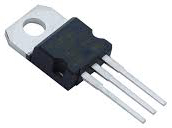All electronics will fail.
Although a large percentage of electronics will fail, there will be many that will either partially, or
completely, continue to function.
If a device is "hardened" (meaning it has been specifically shielded from the effects of an EMP)
it will continue to function as designed. Many militaries, including the US, have established programs
which have been hardening mission critical devices. The
Joint Base San Antonio-Electromagnetic Defense Initiative
was established in 2020 and tasked to specifically work on such defenses.
Many other devices will continue to function, or partially function, because they are either unintentionally shielded, or they
are partially shielded while being located far enough from the EMP event.
A perfect example of this would be an electronic device stored inside of a metal safe, which acts as a Faraday cage.
The outer metal walls distribute the EMP wave around the safe protecting anything within it.
The only way to protect a device from an EMP is for it to be in an airtight conductive metal container.
If an electronic device is in very close proximity to the generation of a large EMP, this may be true;
however, this would be an extremely rare situation and doesn't apply in a real-world EMP scenario.
Unfortunately, this belief has been repeated so many times that much of the prepper community has taken it as gospel
and continues to distribute it as fact.
How do we know EMP protection doesn't require an air tight container?
First, the companies which are certified to provide EMP shielding for US institutions, such as the DHS and US Navy,
sell a variety of shielding products which are made of conductive mesh. Once such company,
Holland Shielding Systems,
sells
EMP vents
designed specifically for EMP bunkers and Faraday cages. If an EMP enclosure had to be airtight to
provide protection, these devices would fail.
Second, even though it is said that modern cars will not work following an EMP event,
cars demonstrate the metal frames act as Faraday cages to protect many of the electronics within.
The EMP Commission studied the effects of EMPs on a variety of products and systems by subjecting
them to EMPs. In 2004, the commission published
their report
with the findings.
37 vehicles were subjected to EMPs of various strengths while running and not running, but none of them
suffered permanent, crippling damage. Although some of the engines did die when subjected to an EMP,
each vehicle tested by the EMP Commission did start back up. Although, some did encounter effects such
as erroneous blinking lights. The conclusion was that around 90 percent of the vehicles on the road would
suffer no ill effects from an EMP event.
According to
Lifewire,
"the metal body of the vehicle can act as a partial Faraday cage."
Finally, the EMP Commission even studied metal buildings and sheds on concrete and dirt foundations and
found that metal structures with overlapping, but not sealed, seams provided varying degrees of shielding.


